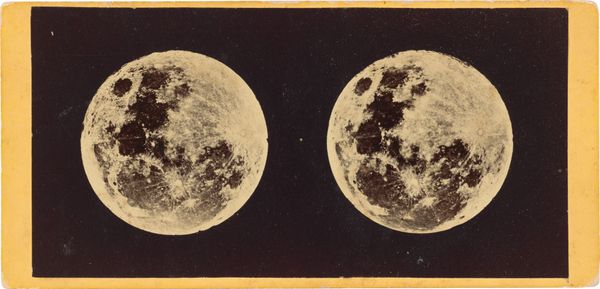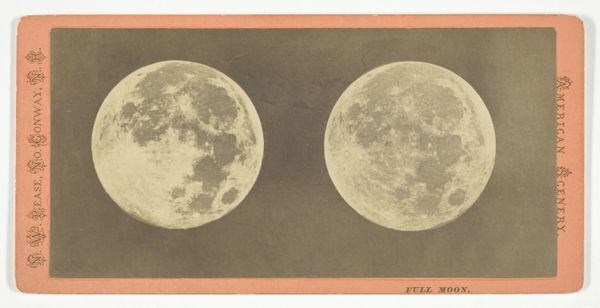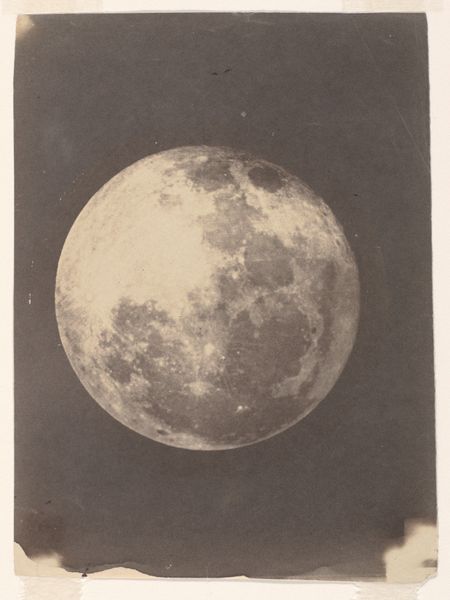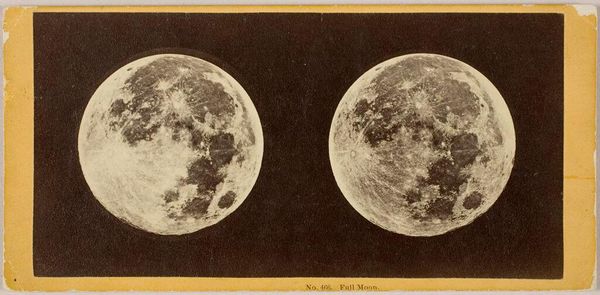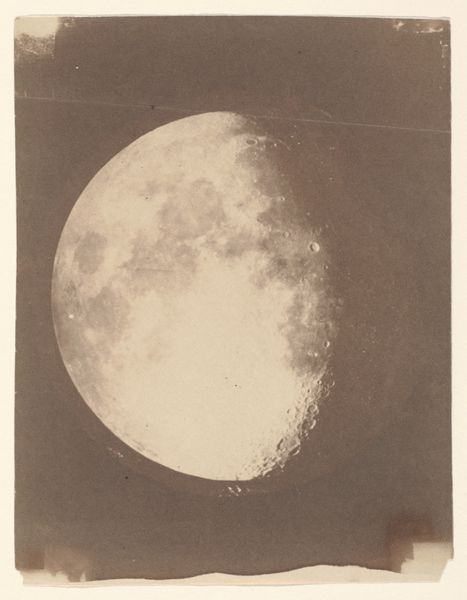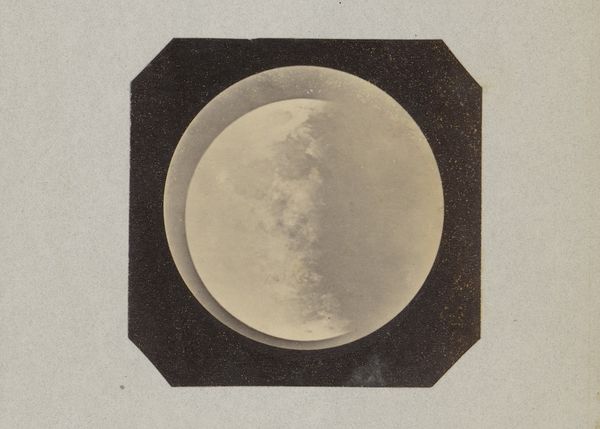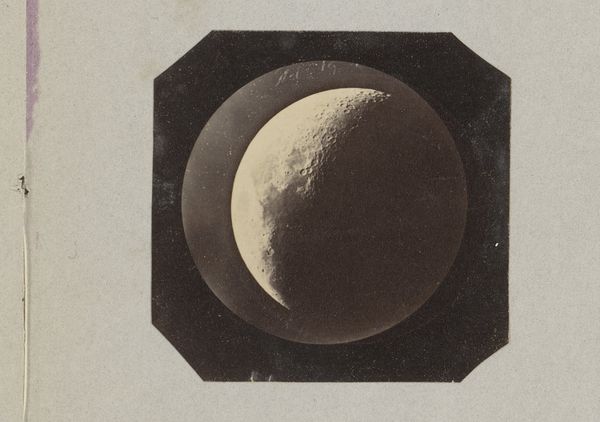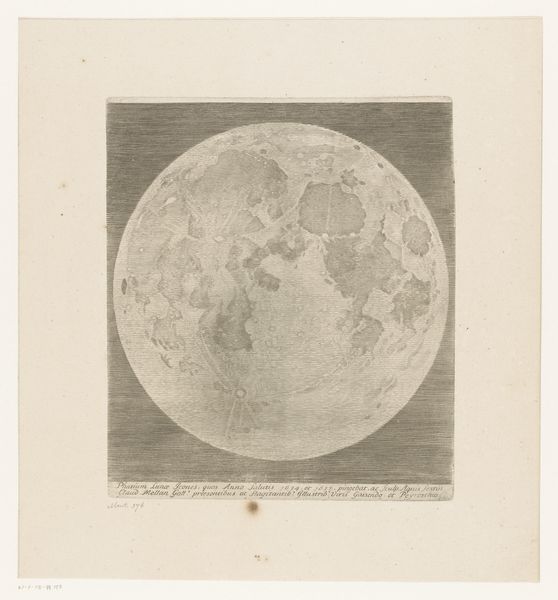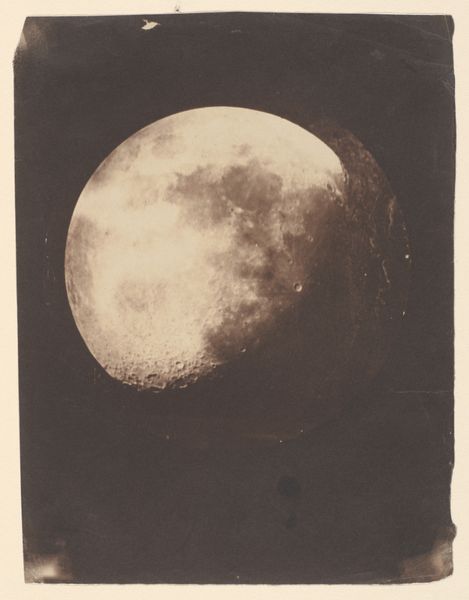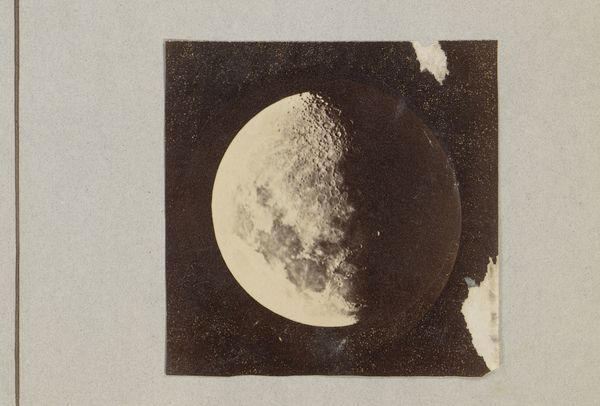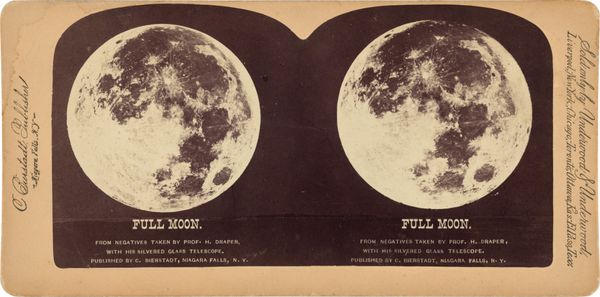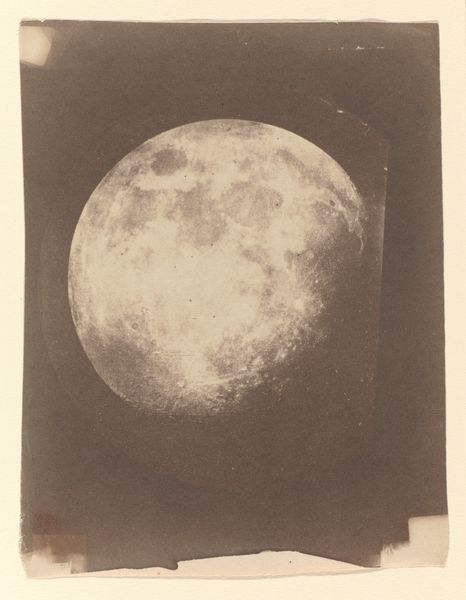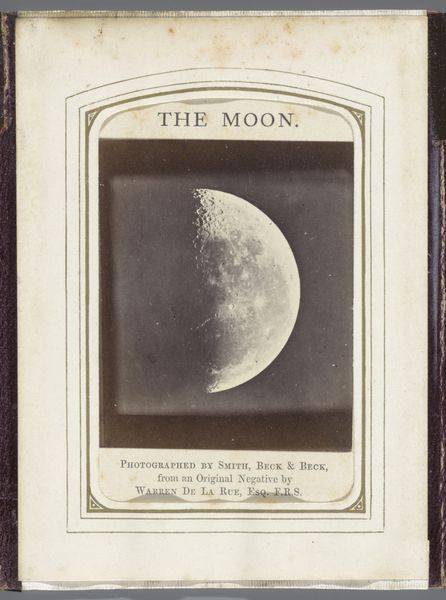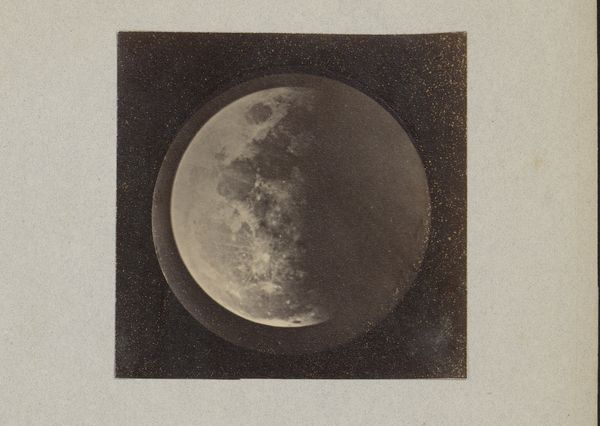
Full Moon: The Left Hand Moon was Photographed June 2nd, 1871. The Right Hand Moon was Photographed Aug. 29, 1871 1871
0:00
0:00
photography, gelatin-silver-print
#
still-life-photography
#
landscape
#
photography
#
gelatin-silver-print
#
realism
Dimensions: 3 3/8 × 6 7/8 in. (8.6 × 17.5 cm)
Copyright: Public Domain
Curator: Here we have a work by Lewis Morris Rutherfurd, entitled "Full Moon: The Left Hand Moon was Photographed June 2nd, 1871. The Right Hand Moon was Photographed Aug. 29, 1871". Editor: My initial reaction is a kind of wonder, almost disbelief. Two distinct images of the moon captured at different moments and presented together...it emphasizes temporality and shifts in perception so viscerally. Curator: Indeed. As a gelatin silver print, its very existence speaks to the evolution of photographic processes and their accessibility in the late 19th century. What strikes me is that while the subject matter evokes vastness, its material form reminds us of the hands-on work of making art. Editor: Absolutely. And this raises questions about its circulation: these wouldn't have been presented as astronomical records alone, would they? The text on the mount, "American Views," positions them within a broader cultural context of exploration and the dissemination of knowledge to the public. Curator: Precisely. It prompts reflection on the very idea of documentation versus aesthetic representation. The contrast between the dark background and the pale lunar surface certainly highlights technique. Editor: We must consider its contemporary audiences too. Think of the socio-political landscape in 1871. Images of the moon would tap into both scientific progress and popular fascination, contributing to a shared visual culture. What institutions shaped the way these images were seen? Curator: One can easily envision them gracing the shelves of scientific societies, maybe even finding a place in educational settings to support theories about our solar system, contributing to debates regarding exploration. Editor: And consider the implicit politics. "American Views" suggests this contributes to nation-building, to projecting an image of progress. Did this feed into certain types of ideology at that time? Curator: This piece isn't merely a scientific image; it represents human aspiration, skillfully captured through very specific production. And that act, in itself, is socially constructed. Editor: Rutherfurd’s "Full Moon" captures both the heavens and Earth-bound forces. I now perceive how the politics and public consumption merge through the artistry on view. Curator: By observing its components, manufacture, and impact we achieve understanding regarding production's transformative agency upon artistry.
Comments
No comments
Be the first to comment and join the conversation on the ultimate creative platform.
